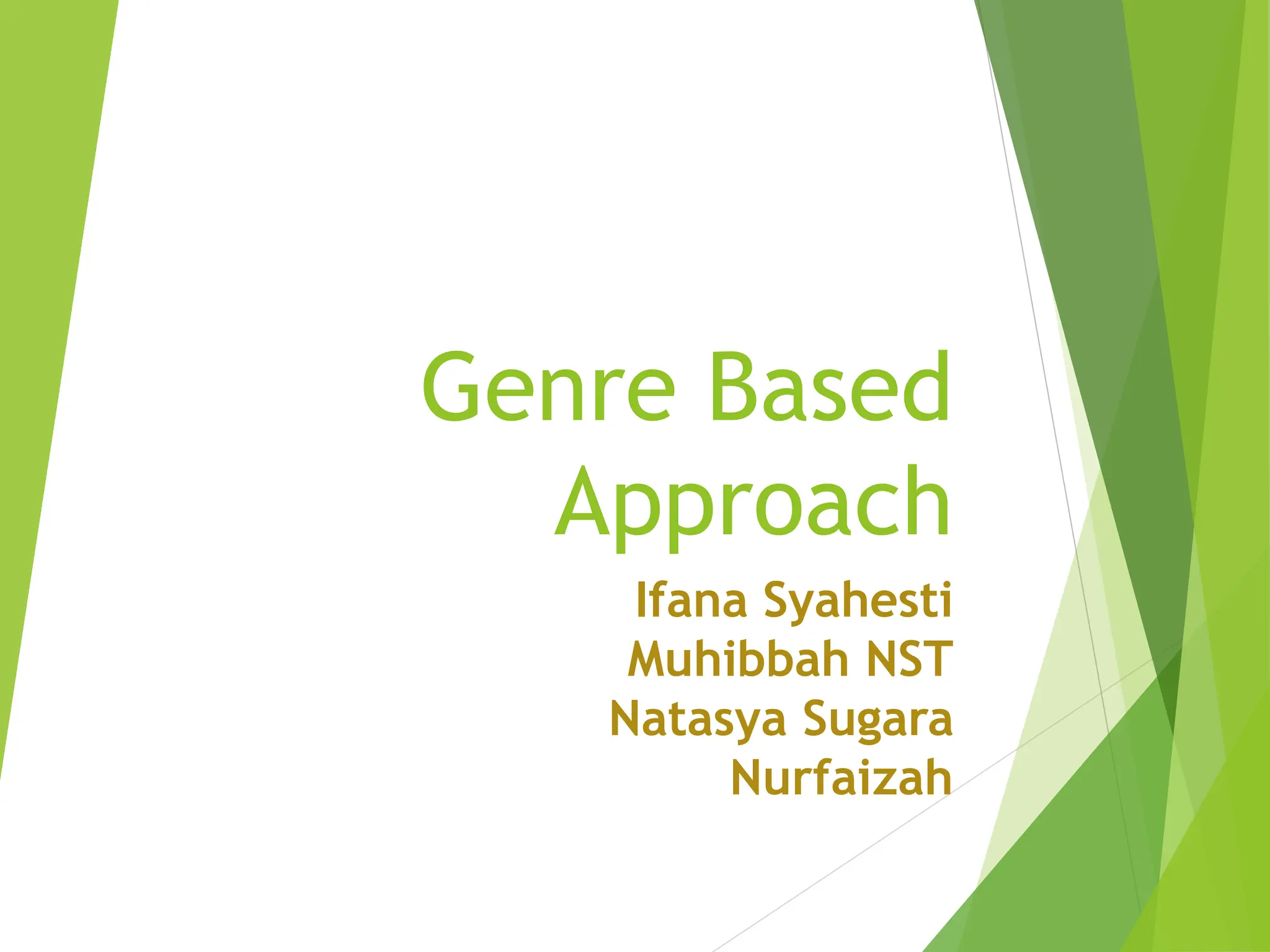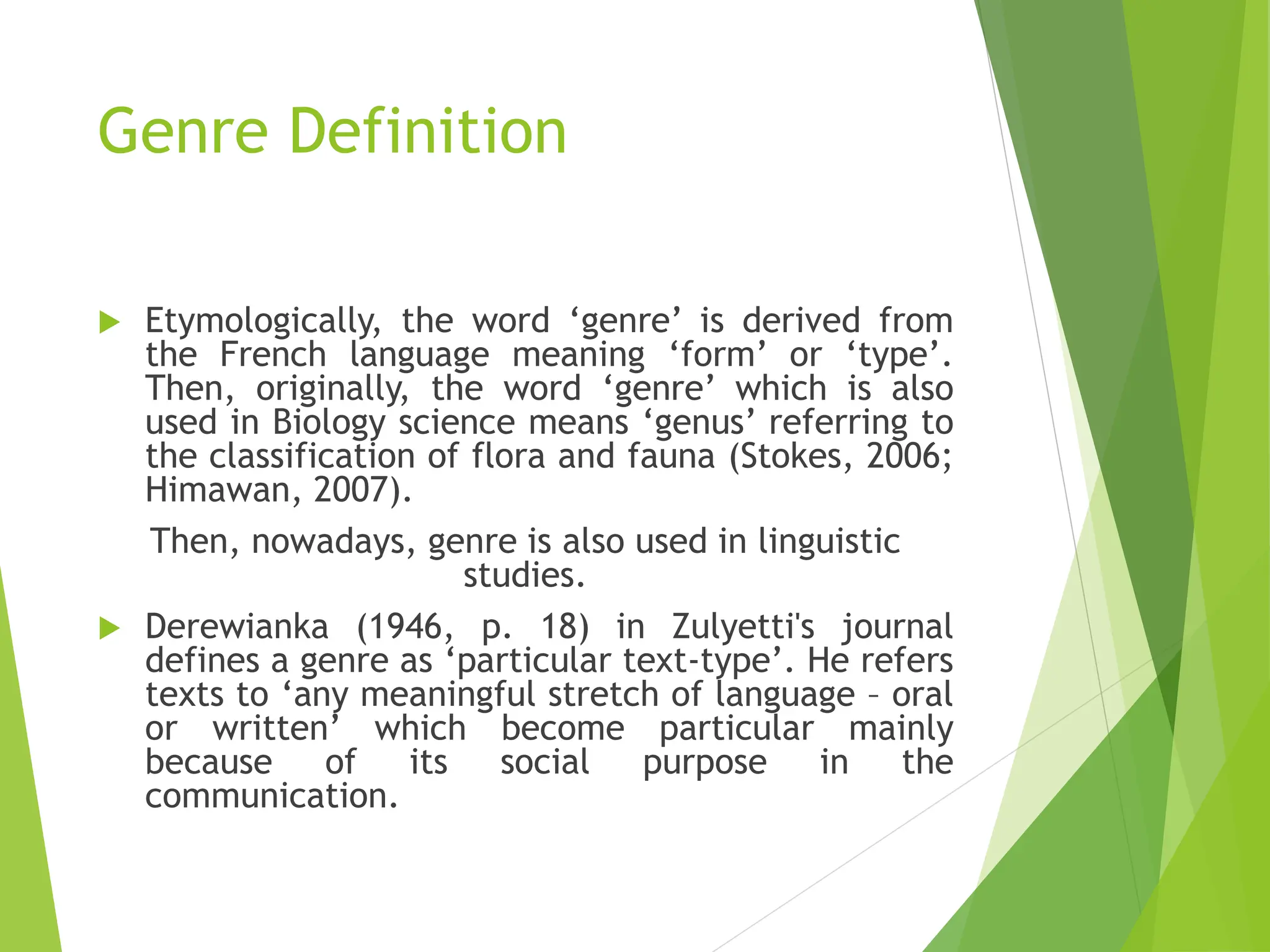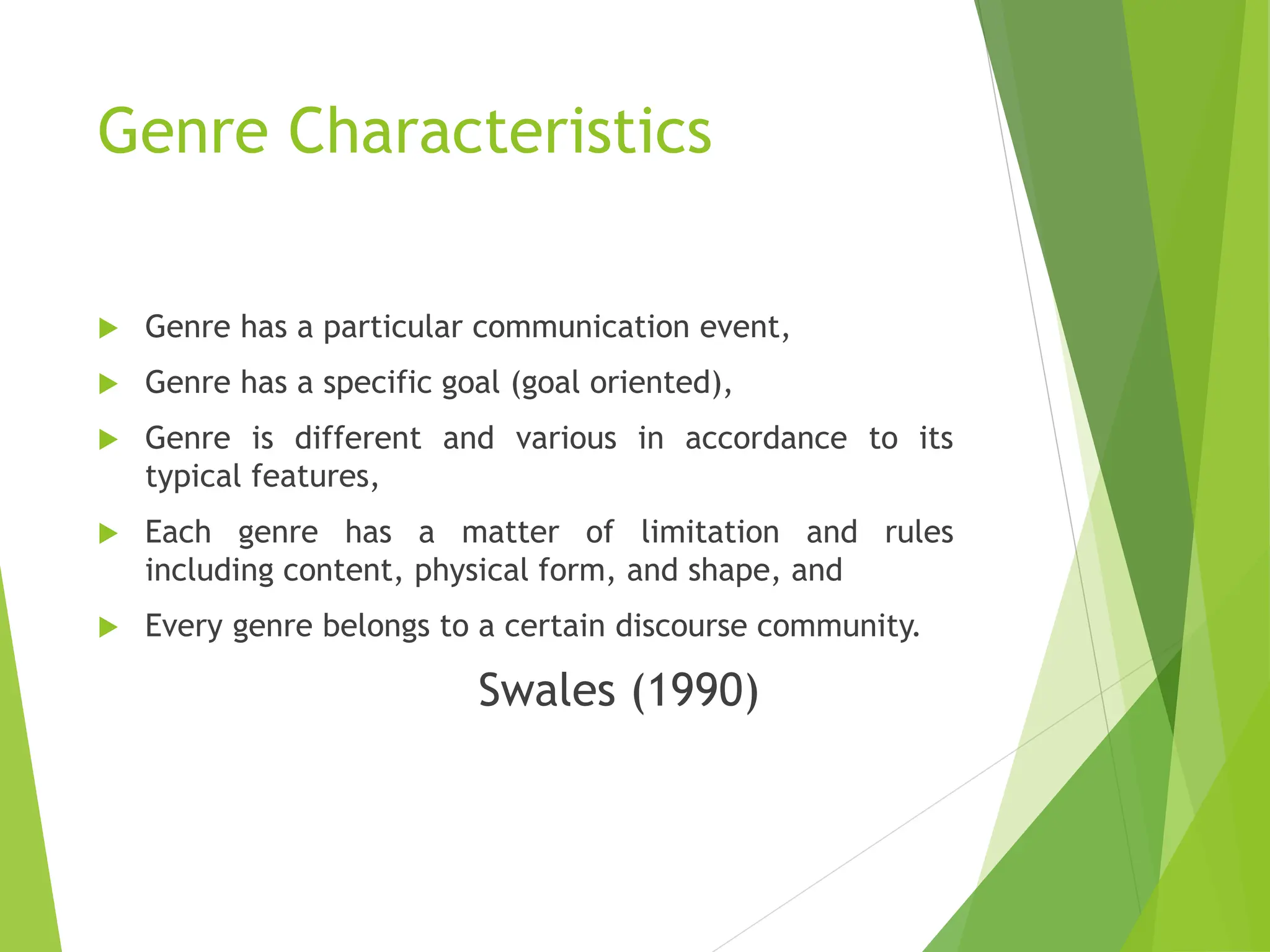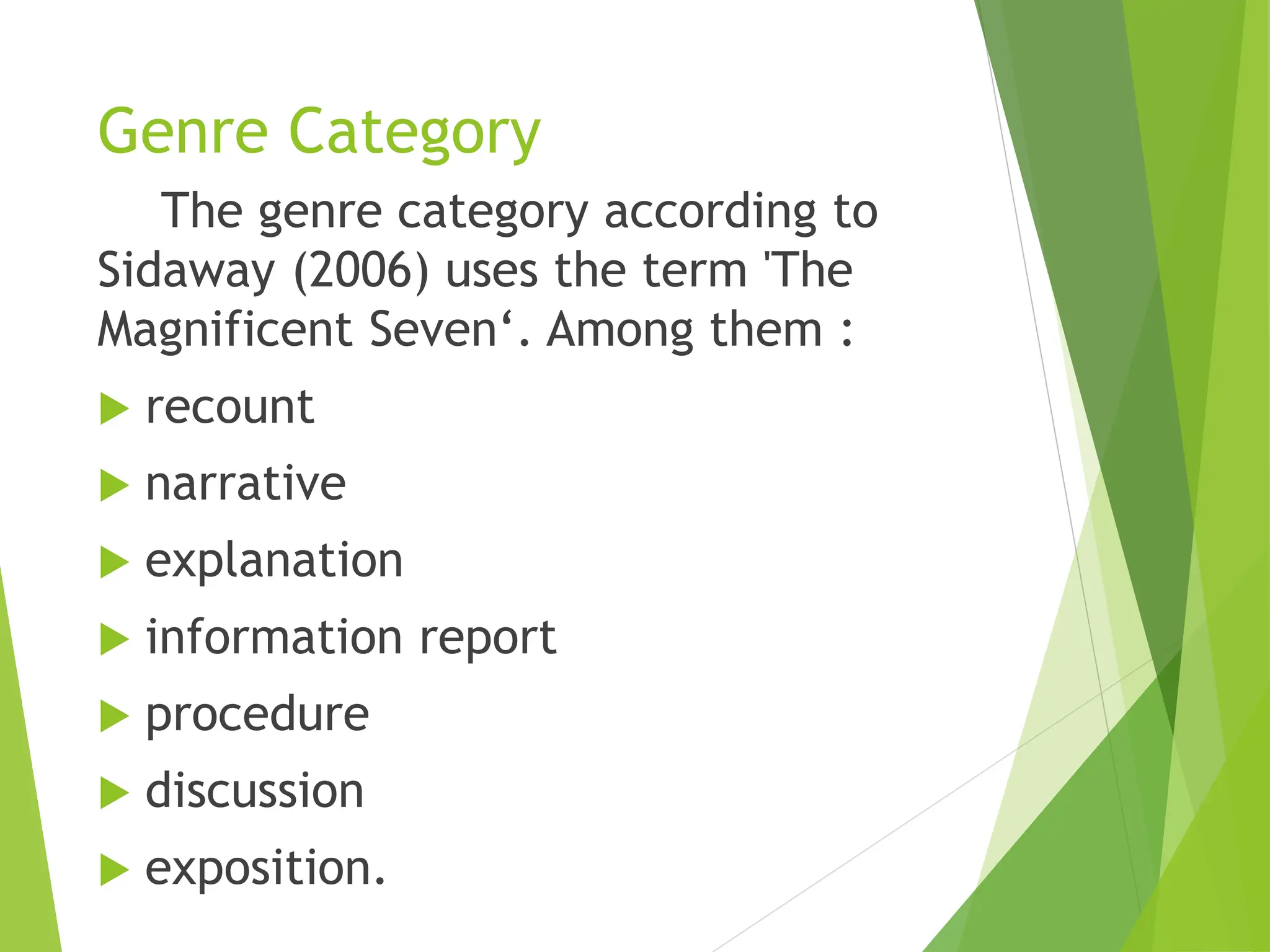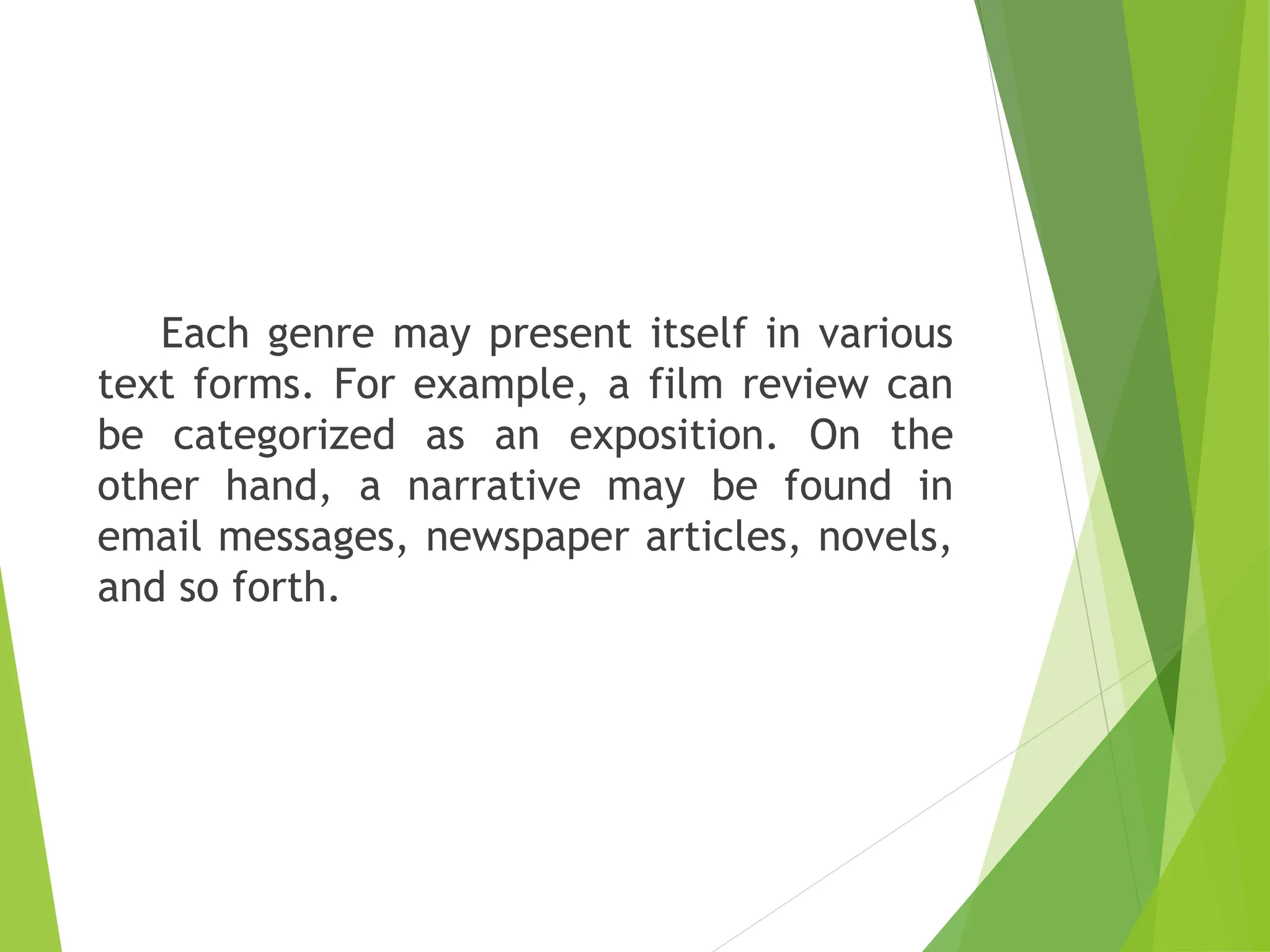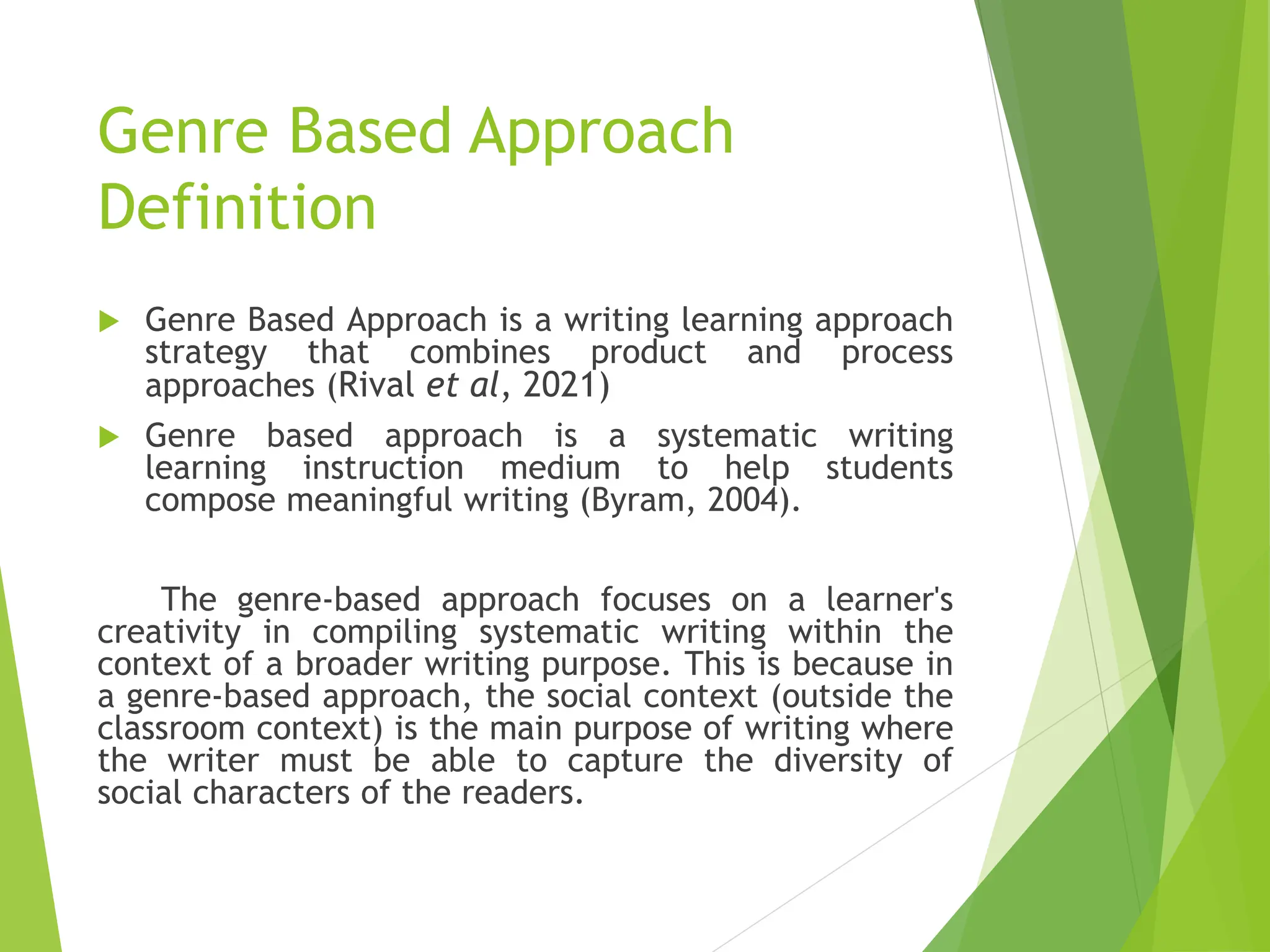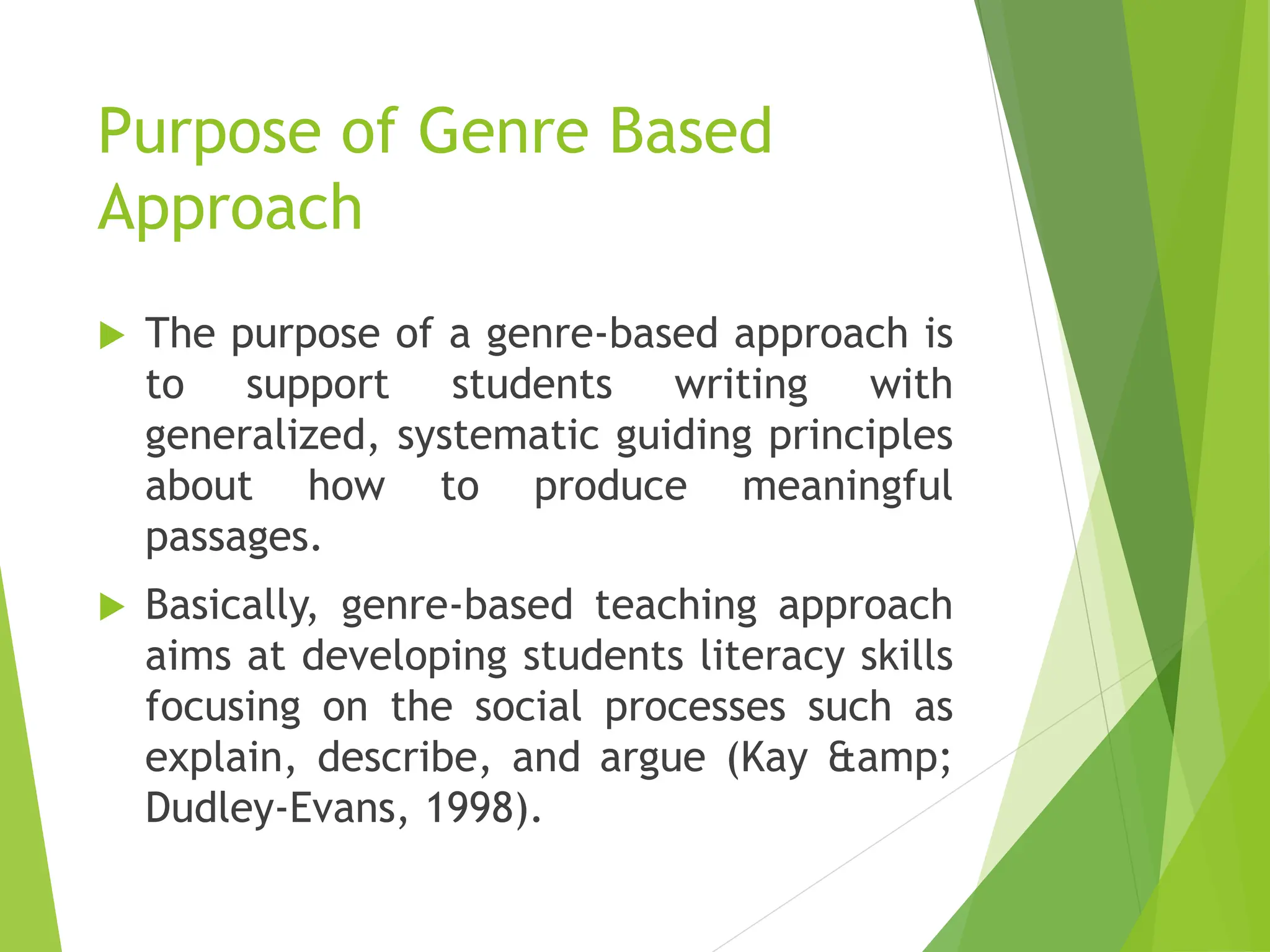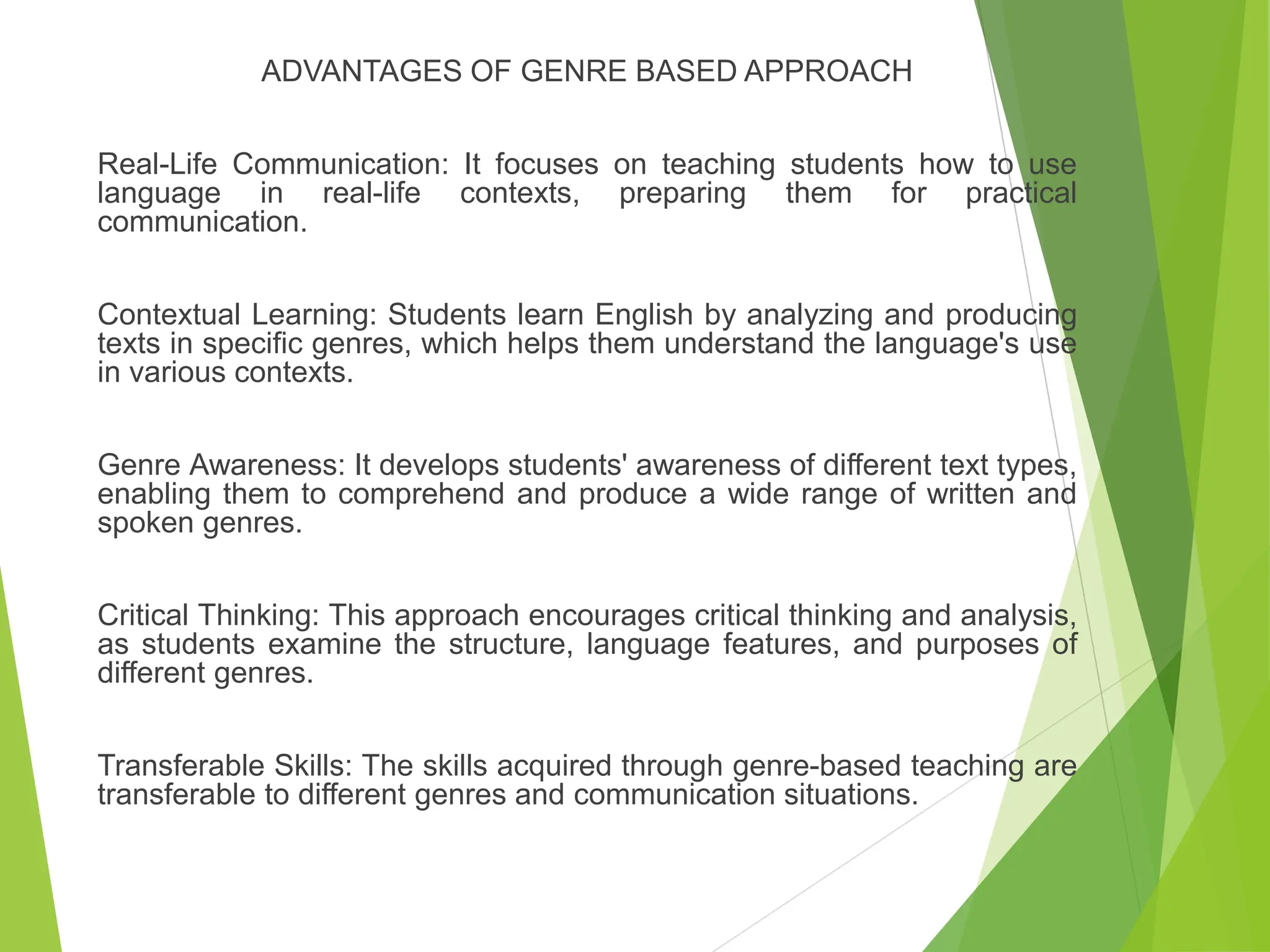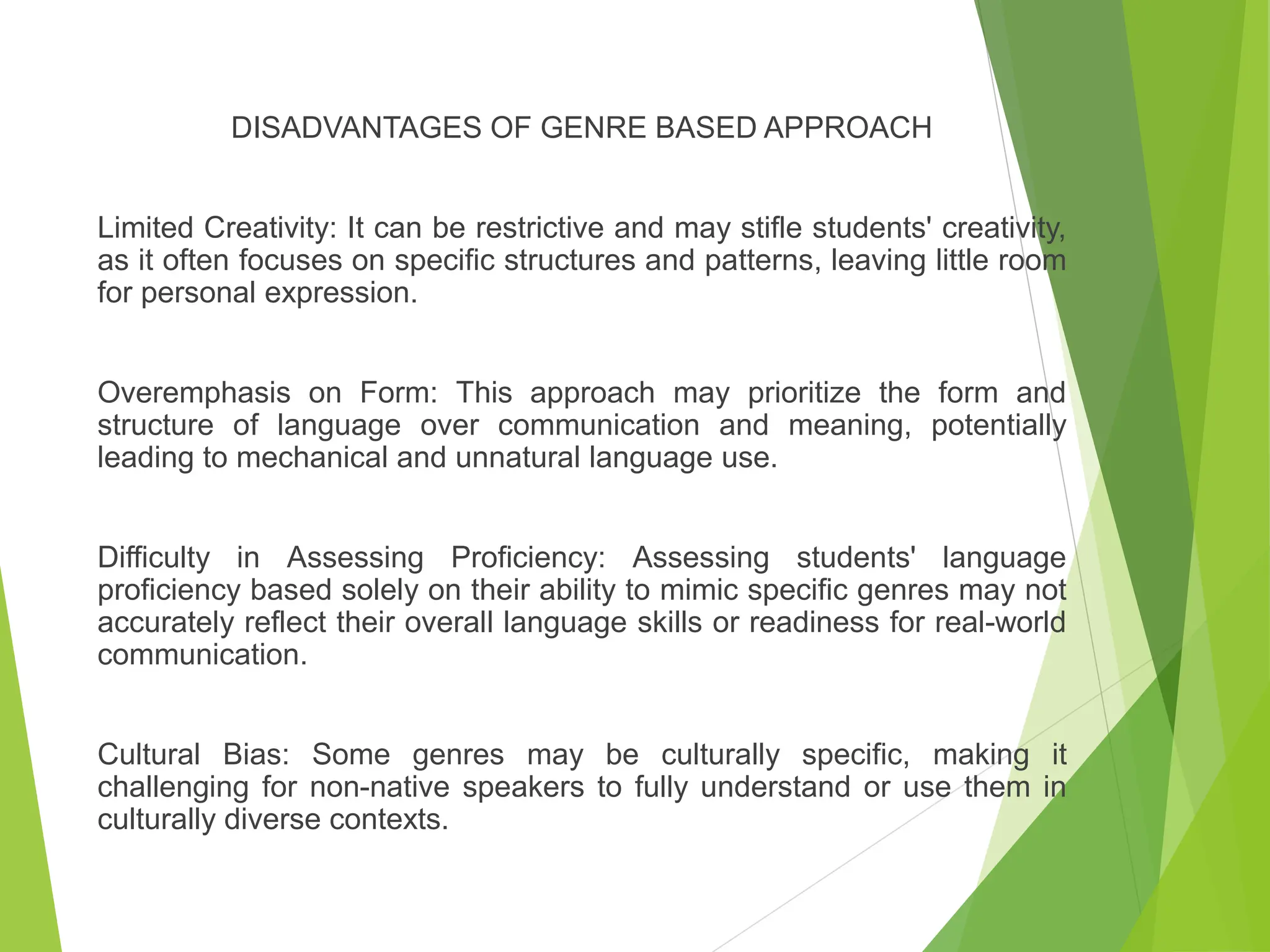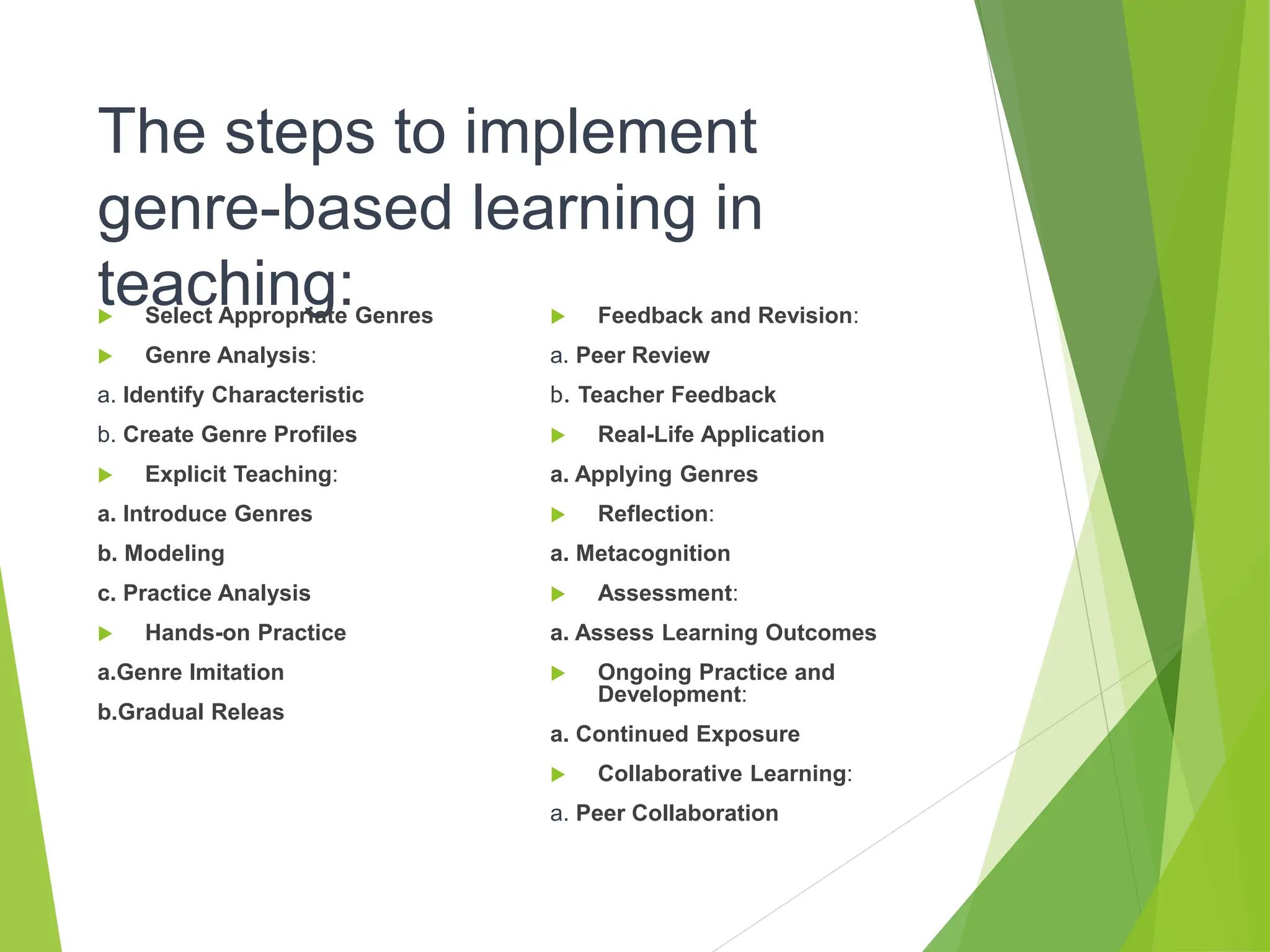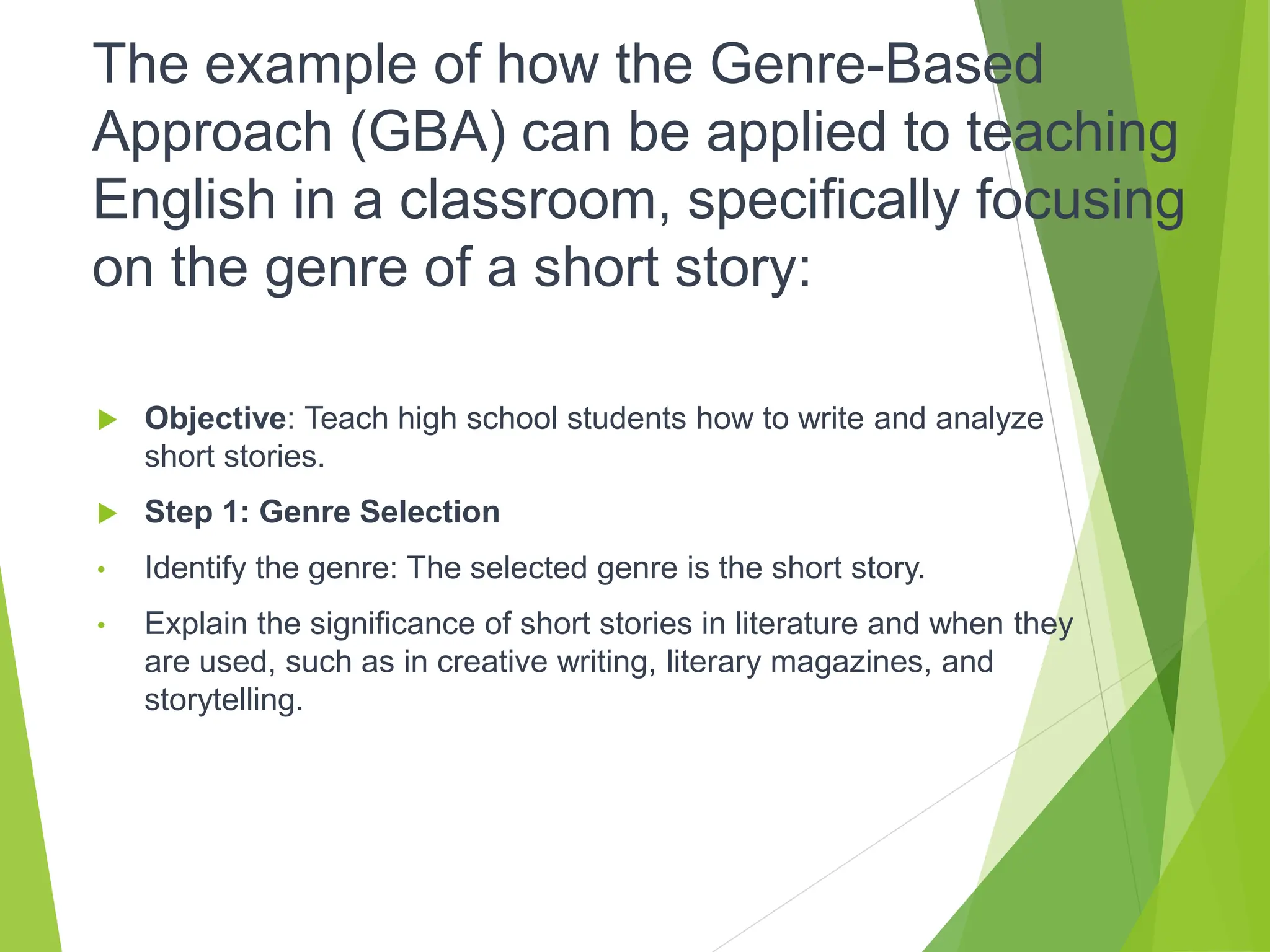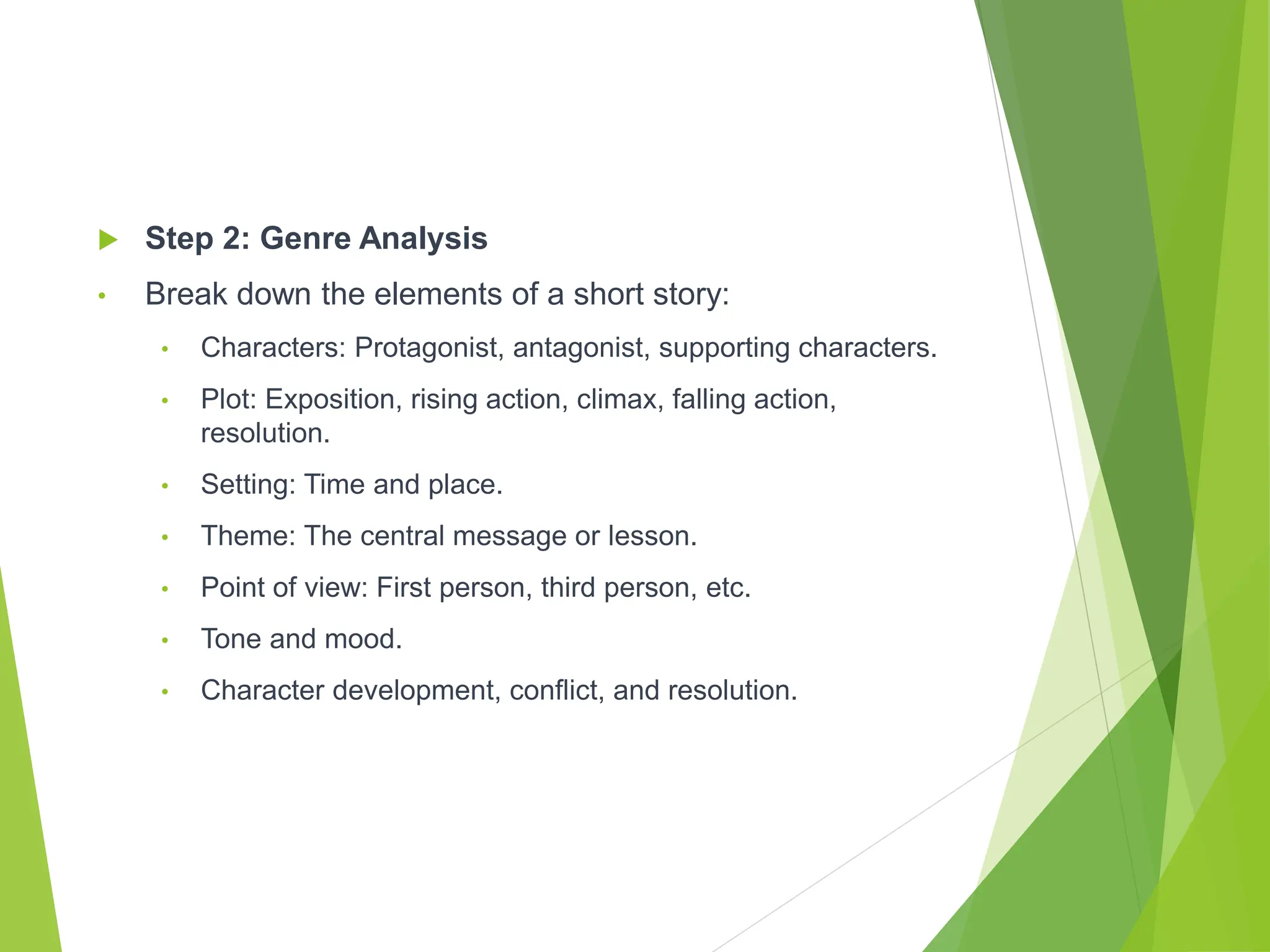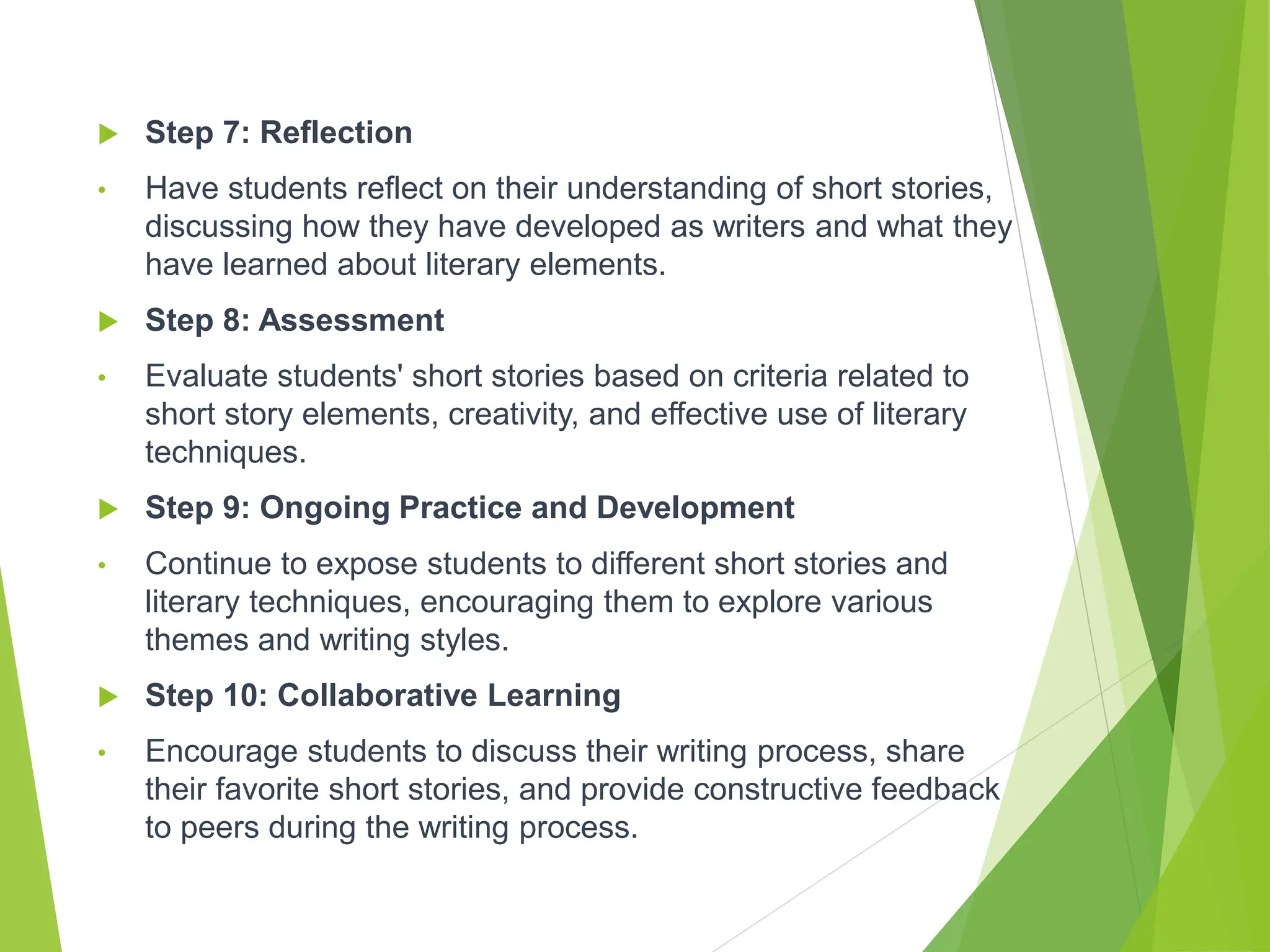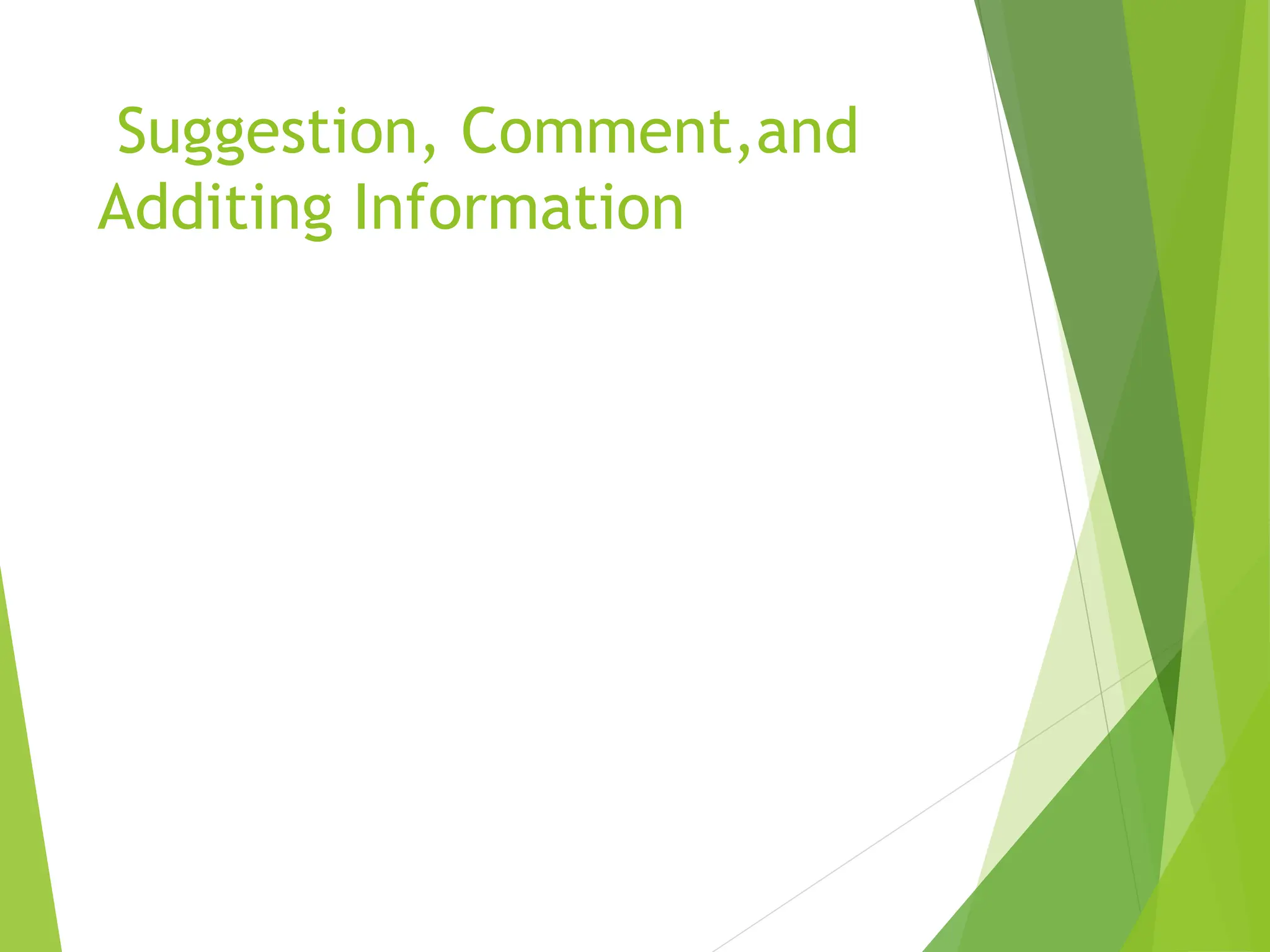The document discusses the genre-based approach to teaching writing. It defines genre as a text type that has a specific social purpose and communication event. The genre-based approach focuses on systematically teaching writing within social contexts. It aims to develop students' literacy skills by analyzing how different genres are structured and can be produced for various purposes. The document provides examples of genres like recounts and narratives. It also outlines the steps to implement the genre-based approach in the classroom, such as selecting genres, analyzing conventions, modeling, practice, and assessment. As an example, it describes how this approach could be applied to teaching the genre of the short story.
